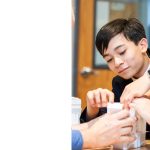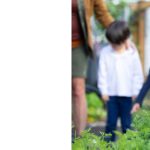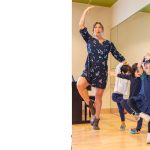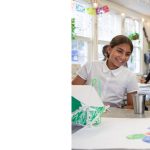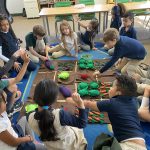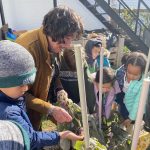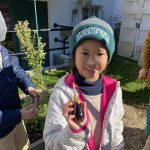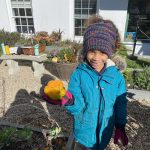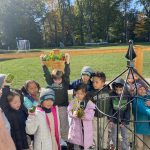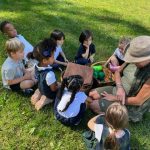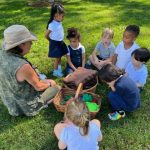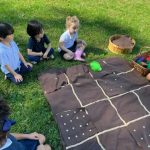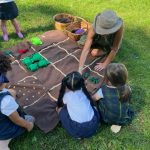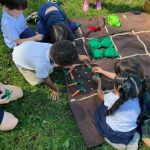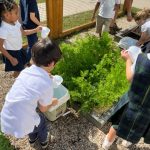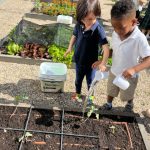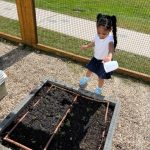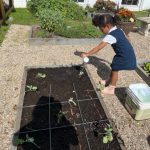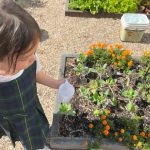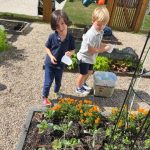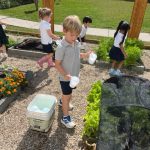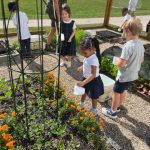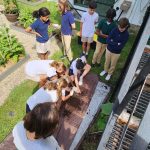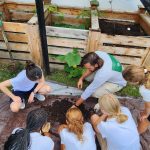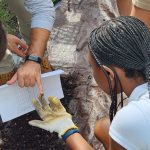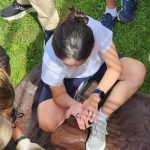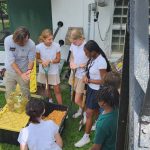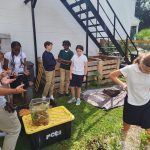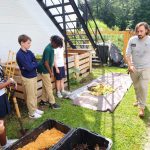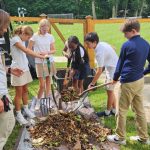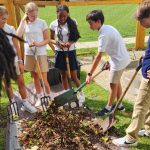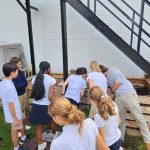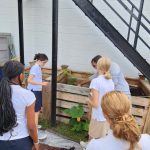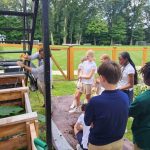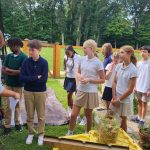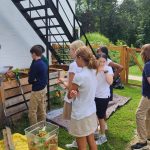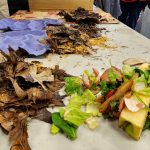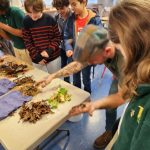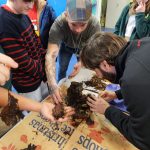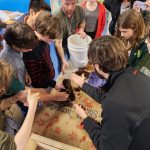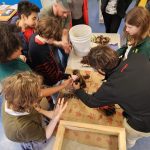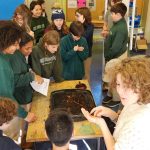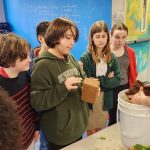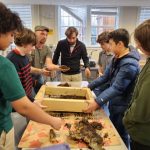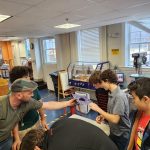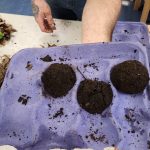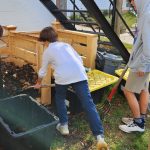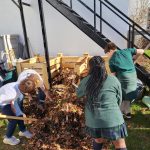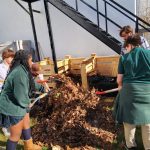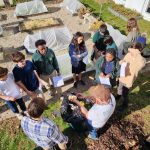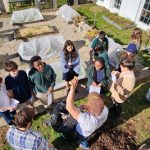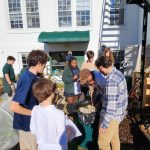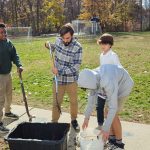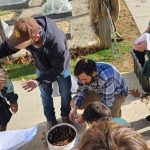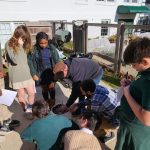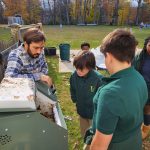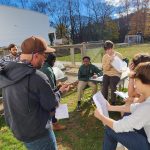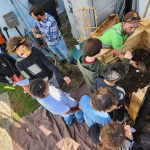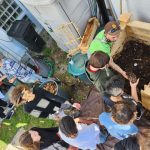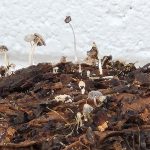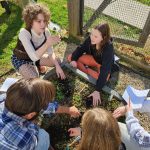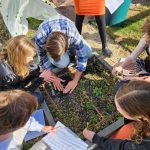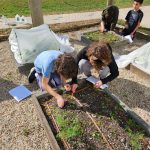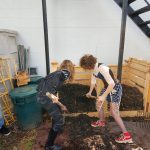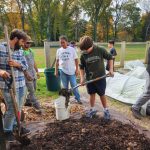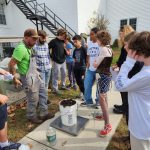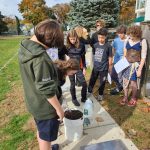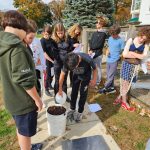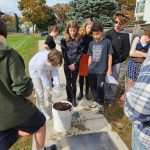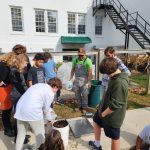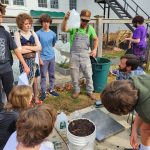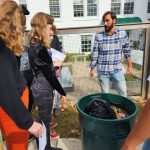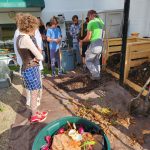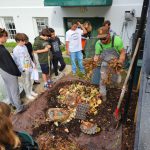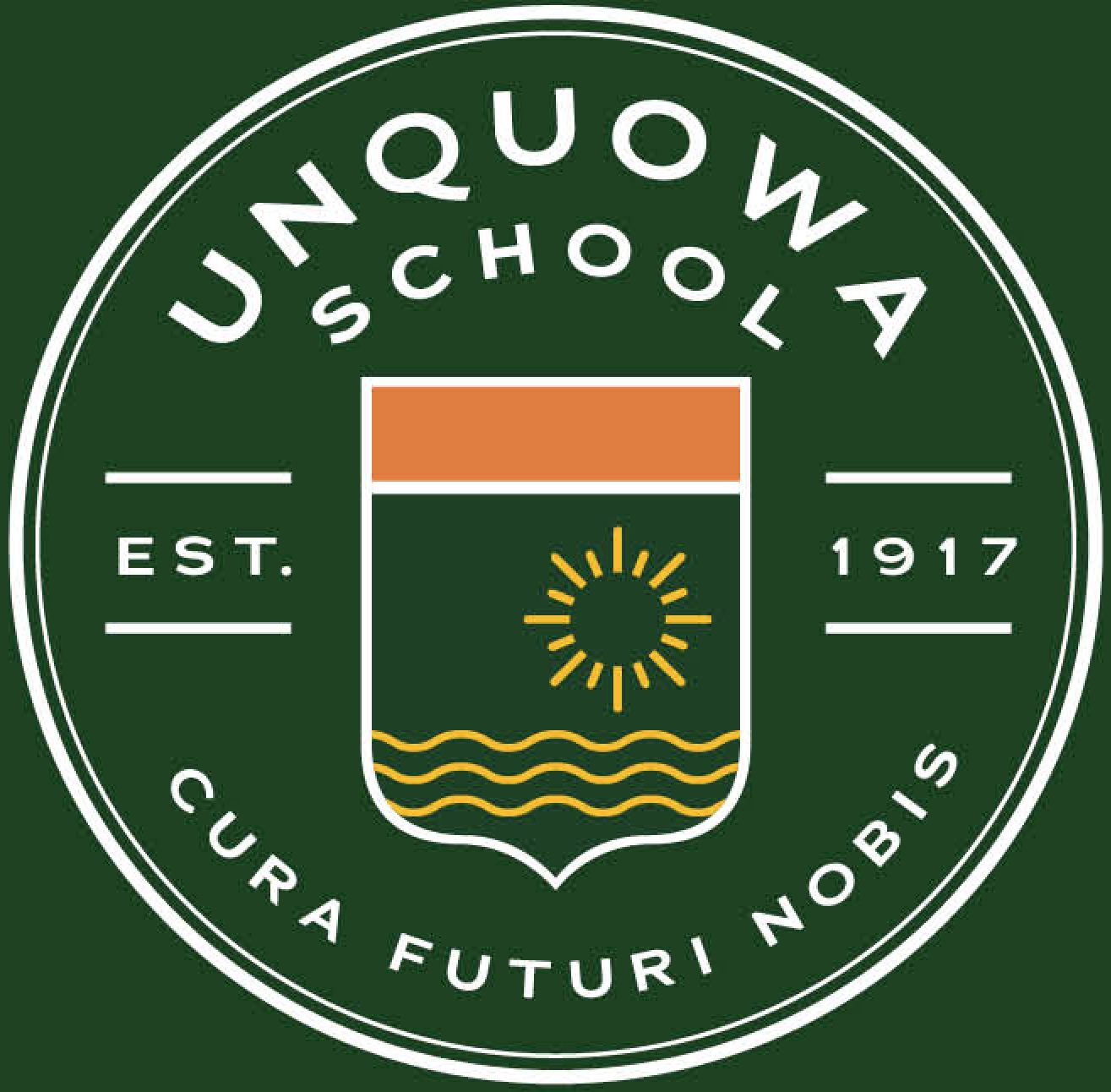Green Thumbs in Action
Posted by Stephanie SatonickSecond grade had a great time with Gardener Amie before the earliest frost hit. First, they learned about square-foot gardening and took some time to design their own gardens. Their gardens included carrots, lettuce, beans, tomatoes, eggplant, peppers, and more! Next, it was time to head out to Unquowa’s garden! They learned that each bed was covered with a white “blanket” that helped protect the vegetables from frost. They learned that it was crucial for the plants to stay protected in order to thrive in cold weather conditions. They even got to harvest some of the vegetables that were ready. After we made a basket of fresh vegetables and herbs, we hand-delivered them to the chefs to prepare for lunch!
Welcome to the Garden!
Posted by Faith BarbutoThis week the PreK got meet our new garden expert, Amie Hall! I was expecting a tour of the garden but this was much more. First, we learned some magic numbers for square gardening. Things got hands on with students getting to “plant” felt fruits and vegetables on a brown felt garden. Then we headed over to the real garden where Ms. Amie showed us some of things growing. We harvested peppers and brought them back to the kitchen where they became Sloppy Joe’s for lunch! The sun was strong that day so we helped the garden by watering the plants. We can not wait to go back again!
Caring about Composting!
Posted by Joshua Bartosiewicz- Looking at mature compost.
- Finding worms and worm eggs in the mature compost.
- WORMS!
- Understanding the parts of a compost pile.
- Compost Master breaks down the essentials for a healthy compost pile.
- Learning about the different ingredients that make up a compost pile.
- The compost pile dance!
- Mixing up the pile more in the dance!
- Checking out the tomato and squash plants that sprouted in the compost pile.
- Showing off some tools we’ll be using to mix up the pile.
- Checking out the start of a new compost pile.
This year, every Monday Unquowa 8th graders are fortunate enough to learn and take part in the schools composting program. As of 2022, Unquowa has teamed up with Park City Composting, which is a composting organization based out of Bridgeport, CT. The school is working hand-in-hand with Tommy (the composting Master from Park City Composting) to educate our students on composting, sustainable waste practices, and gardening methods. In these weekly environmentally themed classes, students are able to have a hands-on experience in which they’ll gain an understanding on how to properly compost as well as learn about its benefits; not only is it important for people but the environment too! In our first visit, the students learned about the different materials thats make up a compost pile (food waste, woodchips, leaves, wood shavings) and they were able to check out some soil samples of mature compost from last year’s compost pile. Unquowa and the students are very eager to explore deeper into the realm of composting this year! ROT ON!
Park City Composting: WORMS!!!
Posted by Joshua Bartosiewicz- Ingredients for the worm bins.
- Observing the ingredients for the worm bin.
- Worms!!!
- Looking for worm eggs!
- Looking at the baby worms.
- Checking out the worms!
- A dry coco coir about to be hydrated for the worm bin.
- Sifting the nutrient rich soil out of the compost bin.
- Organic-rich soil which is the product from the red wigglers breaking down the nitrogen sources.
The past couple of weeks Park City Composting has been introducing various styles of composting to our 8th grade class. Students have learned about Thermophilic composting, Mesophilic composting, how to make a traditional compost pile, how to use a tumbler composter and most recently, how to vermicompost which is composting with WORMS!
Vermicomposting is a style of composting that utilizes earthworms or red wigglers to help aid in the breakdown process of organic material. The worms will eat the nitrogen sources (food scraps), digest the material and reintroduce it into the environment through their nutrient rich waste which are referred to as ‘worm castings’. The students learned about the benefits of this style of composting as well as the anatomy of an earthworm!
In the most recent visit with Park City Composting, students were able to help construct worm bins which are being stored in the science lab and monitored weekly. It is really incredible to see the breakdown process first hand; we are able to watch the food scraps in the pile be converted into organic-rich soil thanks to our wiggly friends!
Park City Composting: Mesophilic vs. Thermophilic
Posted by Joshua Bartosiewicz- Churning out the compost pile!
- Mixing in more leaves (the Carbon source!).
- Finding porosity.
- Determining the porosity percentage.
- Being introduced to the Tumbler or Mesophilic style of composting.
- Students are discussing and recording observations from the Tumbler.
Lately with Park City Composting, the 8th graders have been learning how to measure and record different properties of the compost pile such as temperature, porosity, weight, bulk density. The students compared their results from past weeks and were asked to analyze the causes that may have played a role in these changes. Some examples included; the high activity of the actinobacteria caused more of the compost material to breakdown and released more heat into the pile, the breakdown of the material caused the pile to condense more thus reducing the porosity and much more. After data was recorded from the initial compost pile (also referred to as the Thermophilic pile) students were then introduced to the tumbler (also known as the Mesophilic pile). Students were asked to try to identify the ‘pros’ and ‘cons’ of having each type of pile. They concluded that the tumbler is great for people who don’t have a lot of space for a traditional compost pile such as on an apartment balcony or small backyard. The traditional compost pile is ideal for those with the available space. In addition, the tumbler stays at lower temperatures than the traditional compost pile. Therefore, both types of composting methods are suitable for different situations and utilize different types of bacteria. We are excited to see the quality of compost these two different methods will produce, which will be used to help mend the school garden.
Park City Composting Visit #3 (Temperature, Weight, Porosity, & Bulk Density)
Posted by Joshua Bartosiewicz- Checking out how much of the compost pile has changed since a it was built!
- Looking at the mycelium growing! (Mushroom “roots”)
- The compost pile is teaming with fungi (mushrooms)!
- Some food scraps like seeds or onions have actually sprouted new life again!
- Planting some “Volunteers!” (Plants that sprouted in the compost pile were transplanted into a garden bed)
- Students are planting the sprouts we found in the compost pile into the garden beds!
- Hope this works!
- Gathering samples to measure parameters like weight or bulk density.
- Students learning how to measure bulk density.
- Obtaining the weight of our compost to help us calculate the bulk density!
- A student is pouring in a gallon of water to help determine the porosity of our compost pile.
- Adding more water!
- Keep on adding water!!
- More, more, more!
- Each gallon of water added to the compost bucket represents 20% of space! (5 gallons per 5 gallon bucket means one gallon is 20%)
- Weighing the new material that will be added to the pile!
- Let’s start mixing!




